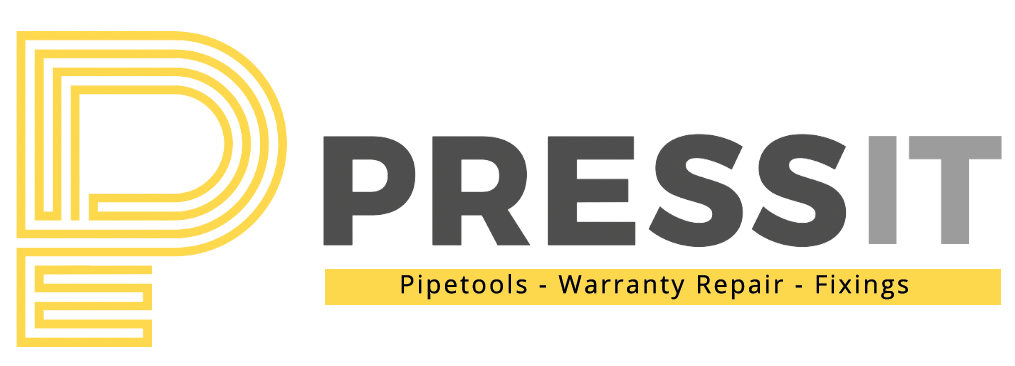If you're a professional tradesperson or a DIY enthusiast, you've probably heard about the Milwaukee Press Tool. This innovative tool revolutionises the way we work with pipes and fittings, making plumbing and other tasks quicker and more efficient. However, to get the most out of your Milwaukee Press Tool, you need to master its usage. In this blog, we will explore ten essential tips and tricks that will help you become a pro in handling the Milwaukee Press Tool like a seasoned expert.
Skip the Reading and Order Milwaukee Press Tool>>
Understanding the Importance of Mastering the Press Tool
Mastering the Milwaukee Press Tool goes beyond mere convenience; it significantly impacts the quality and efficiency of your work. A well-handled press tool ensures accurate connections, reduces the risk of leaks, and improves overall project productivity. With this understanding, let's delve into the tips for mastering this essential tool.
Tip 1: Familiarise Yourself with the Milwaukee Press Tool
Begin your journey to mastery by thoroughly familiarising yourself with the Milwaukee Press Tool. Read the user manual provided by the manufacturer and understand the tool's components, functions, and limitations. Proper knowledge will prevent mishaps and allow you to make the most out of the tool's capabilities.
Tip 2: Safety Measures and Precautions
Safety is paramount in any trade, and working with a press tool demands adherence to safety measures. Always wear appropriate safety gear, including gloves and eye protection, to safeguard against potential hazards. Ensure the tool is turned off when not in use, and keep it away from the reach of children.
Tip 3: Proper Handling and Grip Techniques
To achieve precise and effective connections, practise proper handling and grip techniques with the Milwaukee Press Tool. Position the tool correctly and maintain a firm yet comfortable grip to avoid inaccuracies during the pressing process.
Tip 4: Mastering Different Press Techniques
The Milwaukee Press Tool offers various press techniques that cater to different materials and fitting types. Understanding when to use a quick press or a full press is essential. Quick presses are suitable for certain applications, while full presses ensure a robust connection for heavy-duty tasks.
Sub-tip: Quick Press vs. Full Press
The quick press technique is ideal for softer materials, such as copper pipes, where a full press might cause damage. On the other hand, full presses are more suitable for steel pipes and heavy-duty applications that require a stronger connection.
Sub-tip: Pressing Through Metal Sheets
When working with metal sheets, position the tool accurately to avoid slippage or incomplete connections. Apply steady pressure to achieve a reliable bond between the metal sheets and fittings.
Tip 5: Maintenance and Care for Longevity
Regular maintenance is crucial for the longevity of your Milwaukee Press Tool. Clean the tool after each use, and inspect it for any signs of wear or damage. Lubricate the tool as per the manufacturer's recommendations to keep it in optimal condition.
Tip 6: Choosing the Right Accessories
Selecting the appropriate accessories for your Milwaukee Press Tool enhances its functionality and efficiency. Explore different types of dies and their applications to cater to various pipe materials and sizes. Additionally, choosing the right jaw for the job ensures a secure and precise connection.
Sub-tip: Types of Jaws and their Applications
Consider using standard, compact, or mini-press jaws based on your specific project requirements. Each type offers different capabilities and applications.
Sub-tip: Selecting the Right Jaw for the Job
Ensure the jaw size matches the pipe and fitting dimensions to achieve a seamless and reliable connection.
Tip 7: Enhancing Efficiency with the Press Tool
To maximise efficiency, plan your projects in a way that optimises the Milwaukee Press Tool's capabilities. Strategically use the tool for specific tasks, and incorporate it into your workflow seamlessly.
Tip 8: Troubleshooting Common Issues
As with any tool, you may encounter occasional challenges when working with the Milwaukee Press Tool. Familiarise yourself with common issues and their solutions to overcome them efficiently.
Tip 9: Incorporating Press Tool in Different Projects
The versatility of the Milwaukee Press Tool allows you to use it in various projects beyond plumbing. Explore its potential in electrical connections, HVAC installations, and other applications, expanding its utility in your work.
Tip 10: Continuous Learning and Practice
Becoming a master of the Milwaukee Press Tool requires continuous learning and practice. Keep abreast of new techniques, updates, and best practices in press tool applications. Regularly hone your skills by taking up diverse projects that challenge and improve your proficiency.
Conclusion
By mastering your Milwaukee Press Tool, you unlock a world of possibilities in your trade. Efficient connections, time-saving techniques, and improved project outcomes are within your reach. Remember to prioritise safety, maintain your tool diligently, and continuously seek improvement.
FAQs
Can I use the Milwaukee Press Tool for plumbing projects? Yes, the Milwaukee Press Tool is designed specifically for plumbing projects, allowing you to make secure and leak-free connections between pipes and fittings.
How much pressure does the press tool require? The amount of pressure required depends on the material and size of the pipe. The tool's user manual typically provides guidelines on the recommended pressure for different applications.
Can I use the press tool for electrical connections? While the Milwaukee Press Tool is primarily designed for plumbing applications, it can be used for certain electrical connections that involve compatible fittings.
Where can I buy authentic Milwaukee Press Tools? At PressIT UK, we are authorised dealers for Milwaukee in the UK and Ireland. Purchase the M12 Sub Compact Force Logic at our online store.
